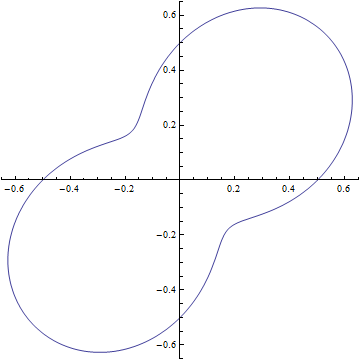If an electromagnetic wave is linearly polarized, the intensity of the light that goes through a polaroid is proportional to the square of the cosine of the angle between the polarization plane and the axis of the polaroid (Malus'law). This is because we consider only the component along the axis of the polaroid. If the wave is circularly polarized, the electric field moves on a circle, but on average, if we decompose it in a component along and perpendicular to the axis of the polaroid, these two components will be equal, so that the intensity will be $I_0/2$, where $I_0$ is the intensity of the wave before going through the polaroid.
Now, if the electric field varies on an arbitrary curve and we know the parametric equation of this curve (for example, it rotates around an ellipse), given a particular direction of the axis of the polaroid, how can we compute the intensity of the resulting wave?

